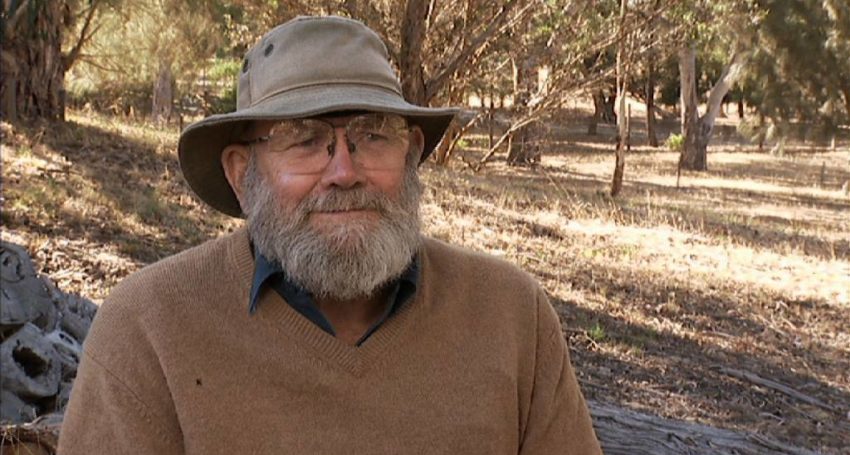News & Media > Editorials > The Environmental Crimes of One of Australia's Wealthiest Pastoralists
The Environmental Crimes of One of Australia's Wealthiest Pastoralists
Indoor Intensive Sheep Feedlot at Kaladbro Station, where 8000 Sheep are held
Thomas Brinkworth, owner of Kaladbro Station where many sheep were found in poor condition, has previously been charged for clearing protected South Australian vegetation. Brinkworth has, on seven different occasions, been convicted of being in breach of the SA Native Vegetation Act - clearing land that is subject to heritage agreement, and therefore requires approval from the minister prior to clearance. No such consent had been granted, and indeed in one case the magistrate said the only explanation for land clearance was ‘to make it easier to muster cattle’.
The specifics of the charges are sizeable. In 2002, he was charged in excess of $250,000 for clearing around 50 hectares of protected land from his Stoneleigh, Flagstaff and Taunta properties. In 2007, he was charged for clearing 19 hectares from his Ninga Ninga property. Most recently, in 2016, he was fined $60,000 personally, and his company, Cappara, was fined $31,000 for clearing 105 hectares of protected South Australian shrub from his Hundren of McNamara property.
Interestingly, in 2004 investigators confirmed a fire that destroyed 700 hectares of protected scrub on Thomas Brinkworth’s Stoneleigh and Bonney’s Camp properties was deliberately lit from four separate ignition points. No further information on charges relating to this incident could be found.

Thomas Brinkworth. Source: InDaily
Over the course of the last 25 years, close to half a million hectares of native vegetation has been lost in South Australia. Vegetation cleared by Brinkworth has included species native to South Australia and important parts of the ecosystem - relied upon by a variety of native Australian species of wildlife, many of which had already been experiencing hardship due to habitat loss and intense drought.
Thomas Brinkworth is one of the wealthiest landowners in Australia, with close to 100 million hectares of agricultural property - mostly used for cattle and sheep farming. Despite the fines incurred by Brinkworth, they have proven to be a considerably easy price to pay for the pastoralist. Brinkworth’s blatant arrogance in reoffending raises the question of whether the size of fines for such crimes should be determined proportionally based upon the net worth of the offender, rather than a fixed value, in order to have any chance of deterring them from reoffending.
The environmental destruction of animal agriculture
.jpg)
A massive amount of land is cleared every year to make way for grazing animals. 60% of the Australian continent is grazed by animals that are ultimately killed for human consumption. This figure fails to include the land used to grow crops such as hay and grain to feed these animals. The clearing of land to make way for grazing animals has a range of consequences for the environment and the native wildlife that depend on it. These consequences include loss of ecological productivity, caused by loss of topsoil, and removal of vegetation cover, which is the most crucial way to prevent erosion and worsening of drought. Native animals suffer directly due to habitat loss, and furthermore, even more suffer indirectly through routine hunting as they are competing with farm animals for pasture.
There are several environmental concerns associated with intensive confinement systems for sheep:
- Build-up of decomposing manure produces noxious gas, which is harmful to the ozone layer and animal health.
- There is potential for nutrient leeching and run off caused by variation in composition of the soil.
- In outdoor systems, soil is loosened and at a high risk of water and wind erosion.
- Waterways can become contaminated with excess nutrients and pathogens by effluent.
- Increased dust from grain dust can pose a health hazard to both humans and animals.
However, little research has been done to quantify just how damaging these systems are to environmental and human health. Despite lack of research into detrimental effects, these facilities are steadily on the rise, and the public are largely in the dark about the environmental damage they have the potential to cause. (Dowling & Crossley)
The climate emergency is one of the most pressing issues of our time, and there is no room for complacency when it comes to measuring the impact human activity is having – particularly when it comes to the animal agriculture sector. It is already known that up to 51% of global greenhouse gas emissions can be accounted for by the agriculture industry. Transparency is essential.
References:
www.erisk.net/erisk7/article/404200/resistant_sa_grazier_brinkworth_fined/
https://www.abc.net.au/news/2004-05-14/scrub-fires-deliberately-lit/1975692
https://www.abc.net.au/news/2003-09-12/brinkworth-cops-record-land-clearing-fine/1477614



